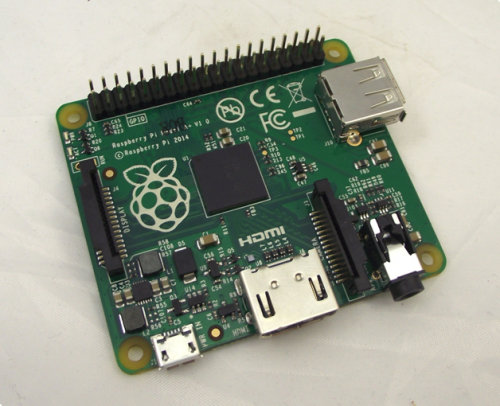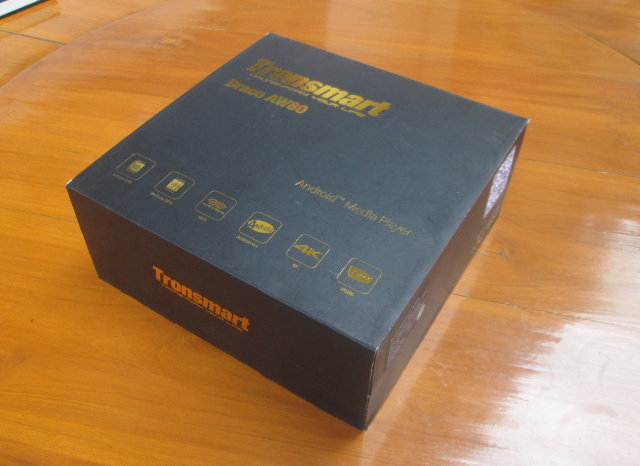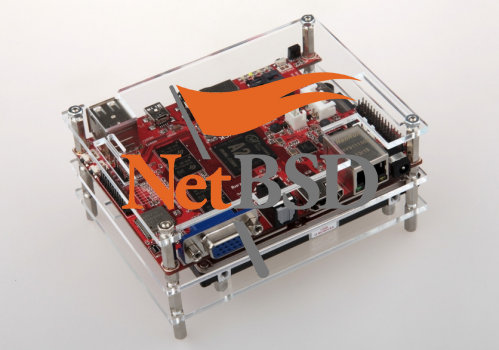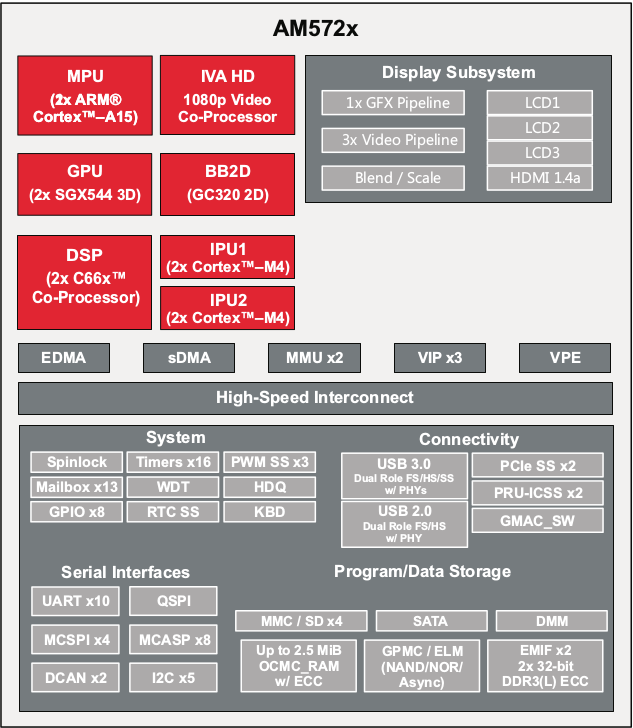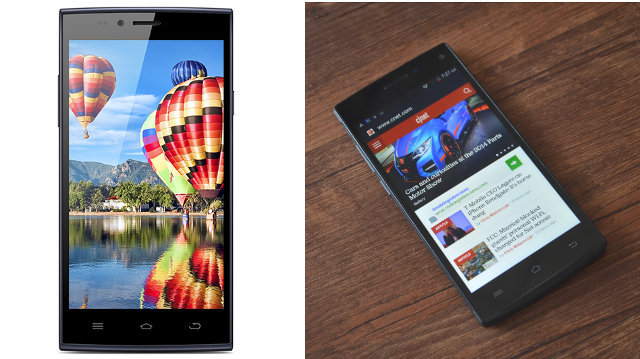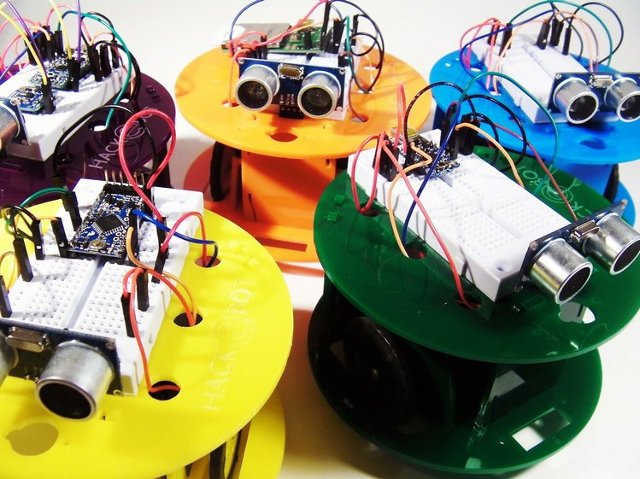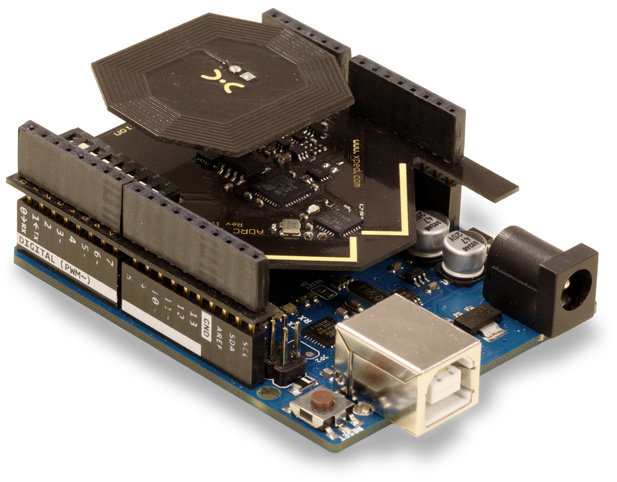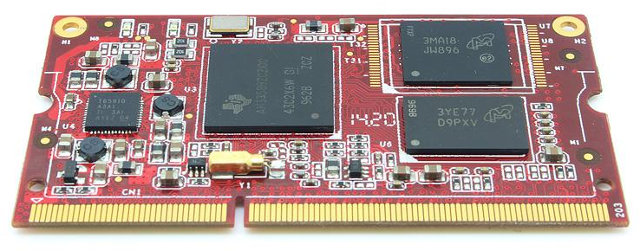After the Raspberry Pi foundation officially announced Raspberry Pi Model B+ board, it was natural to expect a Model A+ to come soon after. Based on a webpage on Element14 (now down), an update of the cheapest version of the Raspberry Pi could get announced very soon, maybe as soon as Monday. It has specifications very similar to Model A, but replaces the 26-pin GPIO connector, by a 40-pin connector, a micro SD slot takes the place of a full-sized SD slot, and power management has been improved so that it’s more efficient, and can support “power hungry” USB devices. [Update: It’s now officially announced as planned] I’ve drawn a comparison table between the latest two boards: Model B+ vs Model A+. Raspberry Pi Model B+ Raspberry Pi Model A+ SoC Broadcom BCM2835 ARM11 processor @ 700MHz with VideoCore IV GPU System Memory 512 MB (PoP) 256 MB (PoP) Storage […]
Unboxing of Tronsmart Draco AW80 Meta mini PC Powered by AllWinner A80 Processor
GeekBuying sent me a sample of their Tronsmart Draco AW80 mini PC powered by Allwinner A80 octa core processor. I’ve received the Meta version with 2GB RAM, and 16GB eMMC, but next month Telos version will ship with 4GB RAM and 32GB eMMC instead. Today I’ll show some pictures of the product and the internal boards, and in a few days I’ll write a full version with the Android 4.4 firmware. Later, I’ll most certainly review the Ubuntu beta image that’s scheduled for released by the end of the month. Tronsmart Draco AW80 Unboxing I’ve received the device by DHL in the black and gold package below. I was surprised by the size of the box (16.4 x 16.4 cm) which quite larger than what I’m used to with other TV boxes, and all cables and accessories are stored in little black boxes within the main package. Accessories include a […]
NetBSD 7.0 To Support Multi-Core ARM Processors from Allwinner and Freescale
NetBSD is an open source Unix-like Open Source operating system running on a wide range of platforms, from servers and desktop systems to embedded devices. The operating system has supported ARM since 1996, with more recent ports for ARM Cortex A8 and Raspberry Pi, but until recently it did not support SMP (Symmetric multiprocessing) to support more than one core. But NetBSD has now fixed this “anomaly” and the following Allwinner A20/A31 and Freescale i.MX6 boards are now supported: Banana Pi (BPI) Cubieboard 2 (CUBIEBOARD) Cubietruck (CUBIETRUCK) Merrii Hummingbird A31 (HUMMINGBIRD_A31) CUBOX-I NITROGEN6X You can give it a try on Allwinner boards by creating an SD card following instructions on NetBSD / Allwinner Wiki. There does not seem to be documentation for the Freescale boards yet. If Allwinner documentation is up-to-date, this is a headless image, as framebuffer, HDMI, etc… are still in to TODO list, but Gigabit Ethernet and […]
BeagleBoard-X15 Development Board To Feature TI Sitara AM5728 Dual Core Cortex A15 Processor
Before the BeagleBone and BeagleBone Black boards based on TI Sitara processor, there were BeagleBoard (-xM) boards powered by TI OMAP3 processors, and Beageboard.org and Texas Instruments are now working on their next open source hardware board with BeagleBoard-X15 powered by TI Sitara AM572 dual core Cortex A15 SoC. Since Beagleboard-X15 has not been formally announced, there’s no picture, and we don’t have the full details yet, but here are the expect technical specifications: SoC – Texas Instruments Sitara AM5728 dual core Cortex A15 processor @ 1.5 GHz, with PowerVR SGX544-MP2 3D GPU, Vivante GC320 2D GPU, 2x Cortex M4 cores, dual core C66x DSP, and IVA (Image and Video Accelerator) for 1080p video decode (H.264, VC-1, MPEG 1/2/4, AVS, etc..) System Memory – 2GB DDR3L with dual 32-bit buses Storage – 4GB eMMC, micro SD slot, and eSATA interface Video I/O – HDMI out up to 1080p60, LCD port, […]
THL T6 Pro and AXGIO Neon N2Q Octa-core Android Smartphones Sell for $117
I’ve just noticed some Mediatek MT6592 octa-core Android smartphones are selling for a little over $100. The cheapest phones seem to be THL T6 Pro and AXGIO Neon N2Q both selling for exactly $116.99, the former on sites like GeekBuying or BuyInCoins, and the latter only selling on Tinydeals, so AXGIO may be a re-branded phone. Let’s compare both phones. Since most phones now look pretty much alike, we’d better look at the hardware specifications instead to eventually decide is better value for money. ThL T6 Pro AXGIO Neon N2Q SoC Mediatek MT6592M Octa core Cortex A7 @ 1.4 GHz with Mali-450MP4 GPU System Memory 1 GB RAM Storage 8 GB + micro SD slot (up to 32GB) Display 5.0” IPS display, 1280×720, 5 Points multi-touch 5.0” IPD display, 960 x 540, 5 points multi-touch Cellular Connectivity GSM: 850/900/1800/1900MHz WCDMA: 900/2100MHz GPRS/HSPA/EDGE Dual SIM Card GSM: 850/900/1800/1900MHz WCDMA: 850/2100MHz GPRS/EDGE/HSPA/HSPA+/ […]
Robotics News – Hack-E-Bot and RiQ Educational Robots, and Maker Club 3D Printed Robots (Pre-Orders / Crowfunding)
I’ve come across several robotic projects this week, so instead of picking one up, or writing a post for each, I’ll summarize the three products into one post. Two of the projects are educational robots based on Arduino, with the sub $50 Hack-E-Bot, or the more advanced RiQ robot, and Maker Club is a company providing the electronics for robotics kit, and you print the plastic parts with your 3D printer. Hack-E-Bot Robot Hack-E-Bot is an affordable open source robot that hopes to encourage children to learn about engineering, electronics, and programming. The robot is powered by Adafruit’s Trinklet Arduino compatible board, connected to a breadboard, and some add-on boards sensors. The basic version comes with a Sonar sensor, but more add-on boards are on the way including bump sensors, a buzzer, colored lights, a claw, a servo scanner, and so on. The project is listed on CrowdSupply, and has […]
Connect Objects Wirelessly, and Create User Interfaces Easily With Xped DeB for Arduino (Crowdfunding)
Xped, an australian startup, has designed an ecosystem comprised of an Arduino shield with NFC and 802.15.4 connectivity, a Raspberry Pi Model B+ based gateway, and DeB browser that generates a user interface in Android, iOS, or Linux based on an XML file stored in an Arduino board. This allows to connect various objects wirelessly, with reduced power consumption thanks to 802.15.4, and to create user interfaces easily with a text file located in your Arduino board. ADRC stands for Auto-Discovery Remote Control, and that’s what Xped ADRC Shield allows thanks to the following hardware specifications: MCU – RM Cortex M3 32-bit microcontroller with 256 KB of FLASH memory. NFC – NDEF Type-2 Tag with bi-directional communications capability. NFP proximity communications technology which is similar to NFC but was developed by Xped to use less than 1,000th of the power and provide faster speeds than NFC. It is mainly used […]
TI Sitara based GOEMBED Systems-on-Module and Single Board Computers with BeagleBone Capes Support
GOEMBED is a startup funded by engineers previously working for Embest Shenzhen, based in Longhua district in Shenzhen, and specialized in embedded boards and modules. They currently have board and modules based on Freescale i.MX6 and Texas Instruments Sitara processors, but I’ll focus on the TI products in this post, including one of their single board computers that supports BeagleBone capes. CM3352 and CM3358 Systems-on-Module CM335x Series modules specifications: SoC – Texas Instruments Sitara Cortex A8 AM3352 @ 800 Mhz or AM3358 @ 1.0 GHz System Memory – 512 MB Micron DDR3 chip Storage – 2 to 4 GB eMMC depending on model PMU – TI TPS65910A3 Dimensions – 67.5 x 36.5 mm Temperature Range – Commercial: 0° to 70° C or Industrial: -40° to 85° C The modules are said to support Linux 3.x, Android 4.x, Ubuntu, Angstrom, Debian, WinCE 6.0/7.0, and uCOS operating systems. SBC335x Single Board Computers […]


